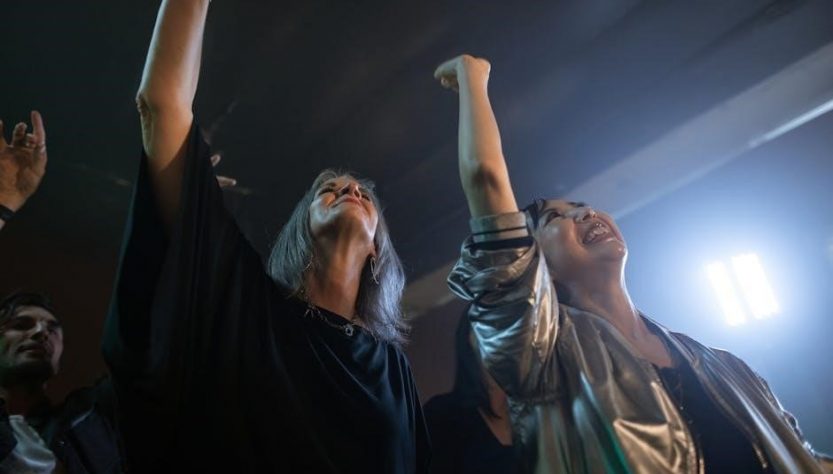Amy Tan’s The Joy Luck Club is a poignant exploration of cultural identity‚ mother-daughter relationships‚ and the immigrant experience‚ set against the backdrop of Chinese-American life.
1.1 Overview of the Novel
The Joy Luck Club‚ written by Amy Tan‚ is a captivating novel that explores the intricate relationships between four Chinese immigrant mothers and their American-born daughters. Set in San Francisco‚ the story delves into themes of cultural identity‚ generational conflicts‚ and the power of storytelling. The novel is structured into four sections‚ each focusing on a different mother-daughter pair‚ and features a non-linear narrative that weaves together past and present. Through vivid vignettes‚ Tan examines the struggles of immigration‚ the clash between tradition and modernity‚ and the universal complexities of family bonds. This celebrated work is both a poignant tribute to the resilience of women and a powerful exploration of the immigrant experience‚ resonating deeply with readers worldwide.
1.2 Historical Context
The Joy Luck Club is deeply rooted in the historical backdrop of Chinese immigration to the United States‚ particularly during the mid-20th century. The novel reflects the experiences of women who fled China amid the turmoil of the Chinese Civil War‚ the Japanese invasion‚ and the subsequent Cultural Revolution. These events shaped their lives‚ influencing their decisions to immigrate and their struggles to adapt to a new culture. The historical context also highlights the generational divide‚ as the mothers’ pasts‚ marked by hardship and loss‚ contrast sharply with their daughters’ American upbringing. This duality underscores the novel’s exploration of identity‚ cultural preservation‚ and the immigrant experience‚ providing a rich foundation for the interwoven narratives of the characters.

Themes in The Joy Luck Club
The Joy Luck Club explores themes of tradition vs. modernity‚ storytelling‚ fate‚ and mother-daughter relationships‚ delving into identity‚ cultural heritage‚ and the immigrant experience.
2.1 Tradition vs. Modernity
In The Joy Luck Club‚ tradition and modernity collide‚ reflecting the generational divide between Chinese immigrant mothers and their American-born daughters. The mothers cling to cultural practices and values from their homeland‚ while the daughters embrace the freedoms and individuality of American life. This tension fuels misunderstandings and conflicts‚ as each generation struggles to understand the other’s perspective. Tan illustrates how the mothers’ adherence to tradition stems from their experiences of loss and resilience‚ while the daughters’ pursuit of modernity reflects their desire for self-discovery and independence. This clash highlights the challenges of cultural assimilation and the universal struggle to balance heritage with personal identity.
2.2 The Power of Storytelling
Storytelling is a vital thread in The Joy Luck Club‚ serving as a bridge between generations and cultures. The mothers use their stories to share their pasts‚ preserving their cultural heritage and conveying life lessons. Through these narratives‚ the daughters gain insight into their mothers’ struggles‚ fostering empathy and understanding. Tan highlights how storytelling not only preserves identity but also heals emotional wounds. The act of sharing stories becomes a means of connection‚ allowing the characters to transcend their differences and find common ground. This emphasis on storytelling underscores its power to unite families and cultures‚ making it a cornerstone of the novel’s emotional and thematic depth.
2.3 Fate and Destiny

In The Joy Luck Club‚ fate and destiny are deeply intertwined with the characters’ lives‚ shaping their decisions and perspectives. The mothers‚ having endured hardships in China‚ often view their lives as predetermined by forces beyond their control. This belief in fate influences their actions and decisions‚ particularly in their relationships with their daughters. The daughters‚ raised in America‚ struggle with the idea of destiny‚ seeking to forge their own paths and resist the passivity associated with fate. Through their stories‚ Tan explores the tension between accepting one’s fate and striving to create a different future. This theme reflects the universal human struggle to balance circumstance and personal responsibility‚ adding depth to the novel’s exploration of identity and cultural heritage.

2.4 Mother-Daughter Relationships
Mother-daughter relationships are central to The Joy Luck Club‚ exploring the complex dynamics between four Chinese immigrant mothers and their American-born daughters. The mothers‚ shaped by their tumultuous pasts in China‚ often struggle to connect with their daughters‚ who navigate a different cultural landscape. These relationships are marked by love‚ misunderstandings‚ and generational gaps. The mothers’ high expectations and traditional values clash with the daughters’ desire for independence and self-discovery. Through these interactions‚ Tan highlights the universal challenges of family bonds‚ cultural differences‚ and the quest for understanding. The novel ultimately reveals the resilience and enduring love within these relationships‚ offering a poignant portrayal of how mothers and daughters find common ground despite their differences. This theme resonates deeply‚ making it a cornerstone of the novel’s emotional depth.

Characters in The Joy Luck Club
The novel features a diverse cast of characters‚ each with unique experiences‚ exploring themes of identity‚ culture‚ and personal growth through their interconnected stories.
3.1 Jing-mei “June” Woo
Jing-mei “June” Woo is a central character in The Joy Luck Club‚ representing the bridge between generations and cultures. As the daughter of Suyuan Woo‚ June struggles with her dual identity‚ caught between her Chinese heritage and her American upbringing. Her journey is marked by a quest for self-discovery and understanding of her mother’s past. Through her story‚ Amy Tan explores themes of cultural conflict‚ family expectations‚ and the challenges of communication between mothers and daughters. June’s narrative voice serves as a poignant reflection of the immigrant experience and the universal search for belonging and identity.
3.2 Lindo Jong
Lindo Jong is a resilient and resourceful character in The Joy Luck Club‚ whose life story exemplifies strength and survival. Born in China‚ Lindo is forced into an arranged marriage at a young age‚ but she cleverly manipulates her situation to secure a better future. Her journey to America symbolizes her determination to escape traditional constraints and create a new life. Lindo’s relationship with her daughter‚ Waverly‚ is complex‚ marked by pride and misunderstanding. Through Lindo’s narrative‚ Amy Tan highlights the tensions between cultural traditions and modern aspirations‚ as well as the enduring power of a mother’s love and sacrifice. Her story underscores the struggles of adaptation faced by immigrant women.
3.3 Suyuan Woo
Suyuan Woo‚ the founder of the Joy Luck Club‚ is a central figure whose legacy profoundly impacts her daughter‚ Jing-mei. Born in China‚ Suyuan endures immense hardships‚ including the loss of her first husband and twin daughters during the Japanese invasion. Her journey to America symbolizes resilience and hope. Suyuan’s relationship with Jing-mei is fraught with unspoken emotions and high expectations‚ reflecting the generational and cultural divide. Through Suyuan’s story‚ Amy Tan explores themes of sacrifice‚ identity‚ and the enduring bond between mothers and daughters. Suyuan’s memory serves as a bridge between past and present‚ connecting Jing-mei to her heritage and fostering a deeper understanding of their shared experiences. Her character embodies the strength and complexity of immigrant mothers.
3.4 An-mei Hsu
An-mei Hsu‚ a devoted member of the Joy Luck Club‚ embodies the resilience of a woman shaped by her tumultuous past. Born into a traditional Chinese family‚ An-mei endured a childhood marred by her mother’s role as a concubine and the societal pressures that accompanied it. Her narrative reveals a deep sense of duty and sacrifice‚ as she strives to preserve her cultural heritage for her American-born daughter‚ Rose. An-mei’s relationship with Rose is marked by a desire to instill in her a sense of identity and respect for their Chinese roots‚ while navigating the challenges of cultural assimilation. Through her storytelling‚ An-mei conveys the wisdom of perseverance and the enduring strength of maternal love‚ bridging the generational gap between tradition and modernity.

Narrative Structure
The novel’s structure weaves together multiple narratives‚ blending past and present through non-linear storytelling‚ creating a rich tapestry of interconnected lives and memories.

4.1 The Four Sections of the Novel
The novel is divided into four sections‚ each focusing on a specific mother-daughter relationship. Each section begins with a parable that introduces the central theme‚ weaving together stories from both China and America; The first section explores the mothers’ pasts‚ while the second delves into the daughters’ struggles with identity. The third section examines the tensions between generations‚ and the final section brings resolution and understanding. This structure allows for a deep exploration of cultural and emotional connections‚ bridging the gap between the mothers’ experiences in China and their daughters’ lives in America. The four sections create a cohesive narrative that highlights the complexity of generational and cultural divides.
4.2 Non-Linear Storytelling
Amy Tan employs non-linear storytelling in The Joy Luck Club‚ interweaving past and present narratives to reveal the complexities of her characters’ lives. The novel shifts seamlessly between the mothers’ memories of China and the daughters’ experiences in America‚ creating a rich tapestry of interconnected stories. This structure mirrors the fragmented nature of memory and highlights the generational divide. By jumping between timelines‚ Tan builds suspense and emotional depth‚ allowing readers to piece together the characters’ histories alongside their present-day struggles. The non-linear format emphasizes the enduring impact of the past on the present‚ underscoring themes of identity‚ heritage‚ and the immigrant experience. This unique narrative approach enhances the novel’s emotional resonance and thematic depth.
4.3 Role of Memory
Memory plays a pivotal role in The Joy Luck Club‚ serving as a bridge between the past and present. Through the characters’ recollections‚ Amy Tan illustrates how memories shape identity and foster understanding across generations. The mothers’ memories of their lives in China reveal their sacrifices and resilience‚ while their daughters’ memories of growing up in America highlight their struggles with cultural identity. Memory also acts as a tool for healing and connection‚ as characters like Jing-mei Woo confront their pasts to understand their mothers. Tan’s use of memory underscores the enduring impact of personal and cultural history‚ showing how it influences relationships and defines individual trajectories. This interplay of memory and narrative enriches the novel’s emotional depth and thematic complexity.
Cultural and Historical Context
The Joy Luck Club explores the cultural dynamics of Chinese-American life‚ set against the backdrop of historical events like the Chinese Civil War and immigration challenges‚ shaping identity and resilience.
5.1 The Immigrant Experience
The immigrant experience in The Joy Luck Club is portrayed through the struggles of four Chinese mothers and their American-born daughters‚ highlighting cultural clashes and identity conflicts. The mothers‚ having fled China amidst war and political turmoil‚ carry emotional scars and a deep desire to preserve their heritage; Their daughters‚ raised in America‚ grapple with balancing traditional values and modern expectations. This generational divide creates tension‚ yet ultimately‚ the novel shows how shared stories and resilience bridge gaps‚ offering a powerful exploration of assimilation‚ sacrifice‚ and the enduring strength of familial bonds. The immigrant experience is central to the novel’s themes of identity and belonging.
5.2 Impact of Historical Events
The historical backdrop of The Joy Luck Club significantly shapes the characters’ lives‚ particularly the mothers’ experiences during the Chinese Civil War and World War II. These events forced them to flee their homeland‚ leaving behind loved ones and cultural roots. The trauma and resilience they developed during this time profoundly influenced their relationships with their American-born daughters. The novel highlights how historical events created a generational and cultural divide‚ as the mothers’ past struggles often clash with their daughters’ modern American identities. Through these narratives‚ Amy Tan illustrates how historical trauma resonates across generations‚ impacting family dynamics and cultural identity. The characters’ stories reveal the enduring effects of these events on their lives and relationships.
5.3 Challenges of Assimilation
The characters in The Joy Luck Club face profound challenges as they navigate the complexities of assimilation into American culture. The Chinese immigrant mothers struggle to reconcile their traditional values with the modern‚ Westernized perspectives of their American-born daughters. Language barriers and cultural misunderstandings create tension‚ as the mothers often feel disconnected from their daughters’ experiences. The daughters‚ in turn‚ grapple with their dual identities‚ feeling caught between their Chinese heritage and their American upbringing. These challenges highlight the emotional and psychological toll of assimilation‚ as the characters confront feelings of alienation and disconnection. Through their stories‚ Amy Tan vividly portrays the struggles of bridging two cultures‚ revealing the universal immigrant experience of balancing tradition and adaptation. The novel underscores the resilience required to navigate these challenges and find a sense of belonging in a new world.

Symbolism in The Joy Luck Club

In The Joy Luck Club‚ symbols like mahjong and the swan feather enrich the narrative‚ representing cultural ties‚ hope‚ and the pursuit of identity across generations.
6.1 The Game of Mahjong
The game of mahjong in The Joy Luck Club serves as a powerful symbol‚ reflecting the intricate bonds and tensions between the mothers and daughters. Mahjong‚ a traditional Chinese game‚ represents both community and competition‚ mirroring the women’s relationships. It symbolizes the delicate balance between collaboration and rivalry‚ as well as the strategic nature of life decisions. The game also acts as a bridge between generations‚ connecting the mothers’ pasts in China with their present in America. Through mahjong‚ Tan highlights the complexity of cultural heritage and the emotional maneuvers required to navigate intergenerational misunderstandings. Ultimately‚ the game embodies the blending of tradition and modernity‚ as well as the enduring connections that define the characters’ lives. Its presence underscores the novel’s themes of identity‚ belonging‚ and the enduring power of shared experiences.
6.2 The Swan Feather
The swan feather in The Joy Luck Club is a poignant symbol of hope‚ resilience‚ and the pursuit of dreams. It appears in the story of June Woo‚ who receives the feather as a gift from her mother‚ Suyuan. The feather represents Suyuan’s enduring love and her desire for June to embrace her cultural heritage while forging her own path in America. It also symbolizes the fragility and beauty of the mother-daughter bond‚ as well as the strength needed to overcome life’s challenges. The swan feather serves as a reminder of the sacrifices made by the mothers and the daughters’ journey toward self-discovery and understanding. Through this symbol‚ Tan emphasizes the power of memory and the enduring connection between generations. The feather’s presence evokes themes of identity‚ belonging‚ and the universal quest for hope and transformation.
The Joy Luck Club is a profound exploration of identity‚ heritage‚ and mother-daughter bonds. Its timeless themes resonate universally‚ bridging cultural divides and touching hearts across generations.

7.1 Legacy of the Novel
The Joy Luck Club has left an indelible mark on contemporary literature‚ becoming a landmark novel in Asian-American literary history. Since its publication in 1988‚ it has been widely acclaimed for its nuanced portrayal of cultural identity and mother-daughter relationships. The novel’s success paved the way for a deeper understanding of the immigrant experience‚ resonating with readers from diverse backgrounds. Its exploration of universal themes has made it a timeless classic‚ frequently studied in schools and universities. The book’s impact extends beyond literature‚ influencing film adaptations and inspiring a new generation of writers to explore their cultural heritage. Today‚ it remains a cherished and influential work‚ continuing to inspire readers with its profound insights into identity‚ family‚ and resilience.
7.2 Impact on Readers
The Joy Luck Club has profoundly impacted readers by offering a deeply personal and relatable exploration of cultural identity‚ family dynamics‚ and the immigrant experience. The novel resonates with readers from diverse backgrounds‚ particularly those navigating the complexities of cultural heritage and generational divides. Its vivid storytelling and universal themes have fostered empathy and understanding‚ helping readers connect with the struggles and triumphs of the characters; Many have found solace in its portrayal of mother-daughter relationships‚ recognizing their own experiences within its pages. The novel’s ability to bridge cultural gaps has made it a beloved and thought-provoking read‚ inspiring reflection on identity‚ belonging‚ and the enduring power of love and resilience.
